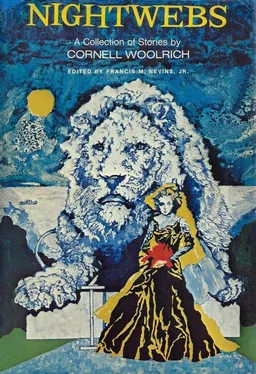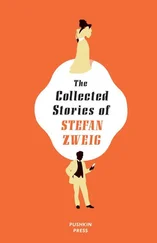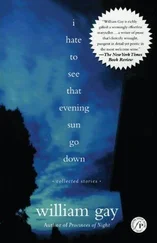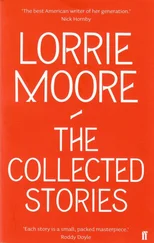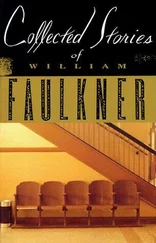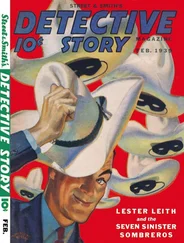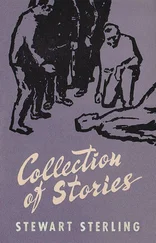As if all this were not enough, Woolrich continued to write other novels — too many for publication under a single byline. Woolrich showed the manuscript of one of these novels to Whit Burnett, who had published some of his shorter fiction in Story, and Burnett showed it to the editors at J. B. Lippincott, who agreed to publish it. Since Simon & Schuster, then publishing the Black books, had exclusive right to use the name Cornell Woolrich, a pseudonym was needed; and together Woolrich and Burnett came up with one. The name they hit upon was William Irish. Had Woolrich met that obscure First National title writer thirteen years before, perhaps at a Hollywood party, and had he been carrying the man’s name around in the back of his mind ever since? If so, his conscious mind must have forgotten it completely, for the existence of a “real” William Irish remained virtually unknown until recently.
The novel that Lippincott published under the Irish byline was, of course, the classic Phantom Lady (1942), the supreme masterwork on the theme of the race against the clock to save the innocent but convicted man from execution. The next Irish novel, Deadline at Dawn (1944), is structurally irritating — most of the book is a series of blind alleys — but magnificently evokes New York City after dark, the quiet despair of those who walk its deserted streets, and a clock race not against the executioner but against the city and the sunrise. In Night Has a Thousand Eyes (1945), published under the final Woolrich pseudonym of George Hopley, the sustained evocation of gibbering nightmare chaos rises to a literally unbearable pitch as the tale unfolds of a simple-minded recluse with uncanny powers who predicts the imminent death of a millionaire by the jaws of a lion, and of the frantic efforts of the doomed man’s daughter and the police to avert a destiny which, they suspect and come to hope, was conceived by a merely human power, Waltz into Darkness (1947), set in the New Orleans of 1880, is a poor novel (the male lead is such a goop and the female such a blackhearted bitch that they both seem more laughable than tragic) but contains some haunting evocations of love and loneliness. And the final Irish novel of the Forties, I Married a Dead Man (1948), is, like “I Wouldn’t Be in Your Shoes,” a quintessential Woolrich story: a woman with nothing to live for, fleeing from her sadistic husband, is injured in a train wreck, is mistaken for another woman with everything to live for who was killed in the wreck, grasps this heaven-sent chance to start a new life with a new identity, falls in love again, and is destroyed along with the man she loves. The novel culminates in that most terrifying Woolrichian paradox where only two resolutions are logically possible, neither makes sense, and each destroys people’s lives. “I don’t know what the game was I only know we must have played it wrong, somewhere along the way...We’ve lost. That’s all I know. We’ve lost. And now the game is through.”
The popular and critical success of the novels led to publication of several collections of Woolrich’s shorter work in a series of hard-cover volumes from Lippincott and in a number of paperback originals which today are collector’s items. His stories appeared regularly in the endless stream of mystery anthologies published in the Forties. And in addition to the many radio plays adapted from his work by himself and others, fifteen movies were made from Woolrich material between 1942 and 1950 alone, including Phantom Lady (Robert Siodmak, 1944), Deadline at Dawn (Harold Clurman, 1946, with screenplay by Clifford Odets), and Night Has a Thousand Eyes (John Farrow, 1948); but almost all of them badly mauled their sources, and one can find little in them of the authentic Woolrich.
After 1948 Woolrich published little: a novel apiece under each of his three bylines in 1950—51, and one novella late in 1952. That he was remembered at all during the early Fifties is due largely to Ellery Queen, who reprinted in his magazine a host of Woolrich’s early pulp stories, and to Alfred Hitchcock, whose Rear Window (1954) gave some idea of Woolrich’s cinematic potential even though little distinctively Woolrichian is left in the finished film. [3] In Hitchcock directed for the television series Suspicion a one-hour version of Woolrich’s “Three O’Clock” (unaccountably retitled Four O’Clock) which is not only completely faithful to the story but also one of the greatest films of soul-pounding suspense ever made — pure Hitchcock and pure Woolrich, the finest adaptation of Woolrich in any form, and already virtually forgotten.
Woolrich’s silence in the Fifties was probably connected with the prolonged illness of his mother: having spent most of his life trapped in an intense, almost pathological love-hate relationship with her, he was unable to function during the last years of her life. Indeed on several occasions he passed off slightly updated old stories as new work, fooling both book and magazine publishers as well as the public. Thus the jackets on Nightmare and Violence , two collections of Woolrich’s short fiction issued by Dodd Mead in 1956 and 1958, claimed that each book included two stories never published before, whereas in fact all the stories had appeared in magazines earlier; nevertheless these collections performed a great service in returning to print not only such fine stories as “I’ll Take You Home, Kathleen” (originally titled “One Last Night”) and “Don’t Wait Up for Me Tonight” (originally entitled “Goodbye, New York”) but also those supreme masterworks “Three O’Clock” and “Guillotine” (“Men Must Die”).
Woolrich’s mother died in 1957, and not long after her death came her son’s first new book in seven years.
To
Claire Attalie Woolrich
1874 — 1957
In Memoriam
This Book: Our Book
Hotel Room (1958) is a collection of largely noncriminous stories set in a New York City hotel at different periods of its history from its early years of sumptuous fashionableness to the last days before its demolition. The Hotel St. Anselm was apparently an amalgam of all the desiccated Victorian residential hotels in which Woolrich and his mother had lived, and the stories set in the hotel mark the beginning of Woolrich’s last period, which consists of a mere handful of stories, most of them near-shapeless, hyperemotional “tales of love and despair” (to cite the subtitle of a collection Woolrich was putting together at his death). Woolrich’s best story of the Fifties, though originally conceived as a chapter in Hotel Room , was excised at the last minute and appeared separately in Ellery Queen’s Mystery Magazine as “The Penny-a-Worder.” It is included in this book, and further comment will follow the story itself.
In 1959 Avon published Beyond the Night , a paperback collection mainly devoted to Woolrich’s excursions into the preternatural. The credit page states that three of its six stories were never before published, but in fact both “My Lips Destroy” and “The Lamp of Memory” were already over twenty years old. The only totally new story in the book was “The Number’s Up,” a bitter little tale that is among Woolrich’s best late stories and is included in this book. The year 1959 also saw publication of Woolrich’s last new novel and his worst, Death Is My Dancing Partner , in which he reworked motifs from “I Wouldn’t Be in Your Shoes” and “Papa Benjamin” and Waltz into Darkness but buried them in gobs of mawkish sentimentality. The book deals with Man, a dancer in the temple of the death goddess Kali, and Maxwell Jones, a third-rate bandleader who sees her dance as his key to that room at the top, despite the legend that at each performance of the death dance Kali claims a victim. In effect, Woolrich in his last novel came around full circle to the sentimental novels he wrote during and just after his college days. [4] One later novel appeared, The Doom Stone (1960), but this was merely the book version of Woolrich’s 1939 Argosy serial “The Eye of Doom,” with the original Part Four removed and replaced by a new last section.
Читать дальше
